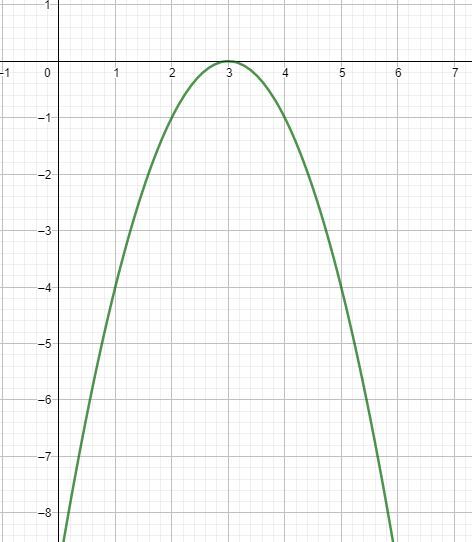Quadratic Inequality with a given solution set
Given a quadratic inequality of the form , with . Select the correct values for , and of a inequality with a solution set , where .
This section requires Javascript.
You are seeing this because something didn't load right. We suggest you, (a) try
refreshing the page, (b) enabling javascript if it is disabled on your browser and,
finally, (c)
loading the
non-javascript version of this page
. We're sorry about the hassle.
For any given n the quadratic inequality − x 2 + 2 n x − n 2 ≥ 0 has a solution set consisting of only the number n . So L = { n } . Example n = 3 then the inequality becomes: − x 2 + 6 x − 9 ≥ 0 using the quadratic formula we get: x = − 2 − 6 ± 3 6 − 4 × − 1 × 9 , which simplifies to x = x = − 2 − 6 = 3 . The fact that a < 0 has to be true becomes clear if we graph a quadratic function: a < 0 has to be true in order for the function to be closed at the top otherwise the inequality a x 2 + b x + c ≥ 0 could not have only one single solution. For the other coefficients let's recall that a quadratic equation only consists of one solution if
D
=
b
2
−
4
a
c
=
0
so if we plug in our values:
4
n
2
−
4
×
−
1
×
−
n
2
=
0
=
4
n
2
−
4
n
2
=
0
. So
a
=
−
1
,
b
=
2
n
and
c
=
−
n
2
is the only given combination that works in this case.
For the other coefficients let's recall that a quadratic equation only consists of one solution if
D
=
b
2
−
4
a
c
=
0
so if we plug in our values:
4
n
2
−
4
×
−
1
×
−
n
2
=
0
=
4
n
2
−
4
n
2
=
0
. So
a
=
−
1
,
b
=
2
n
and
c
=
−
n
2
is the only given combination that works in this case.